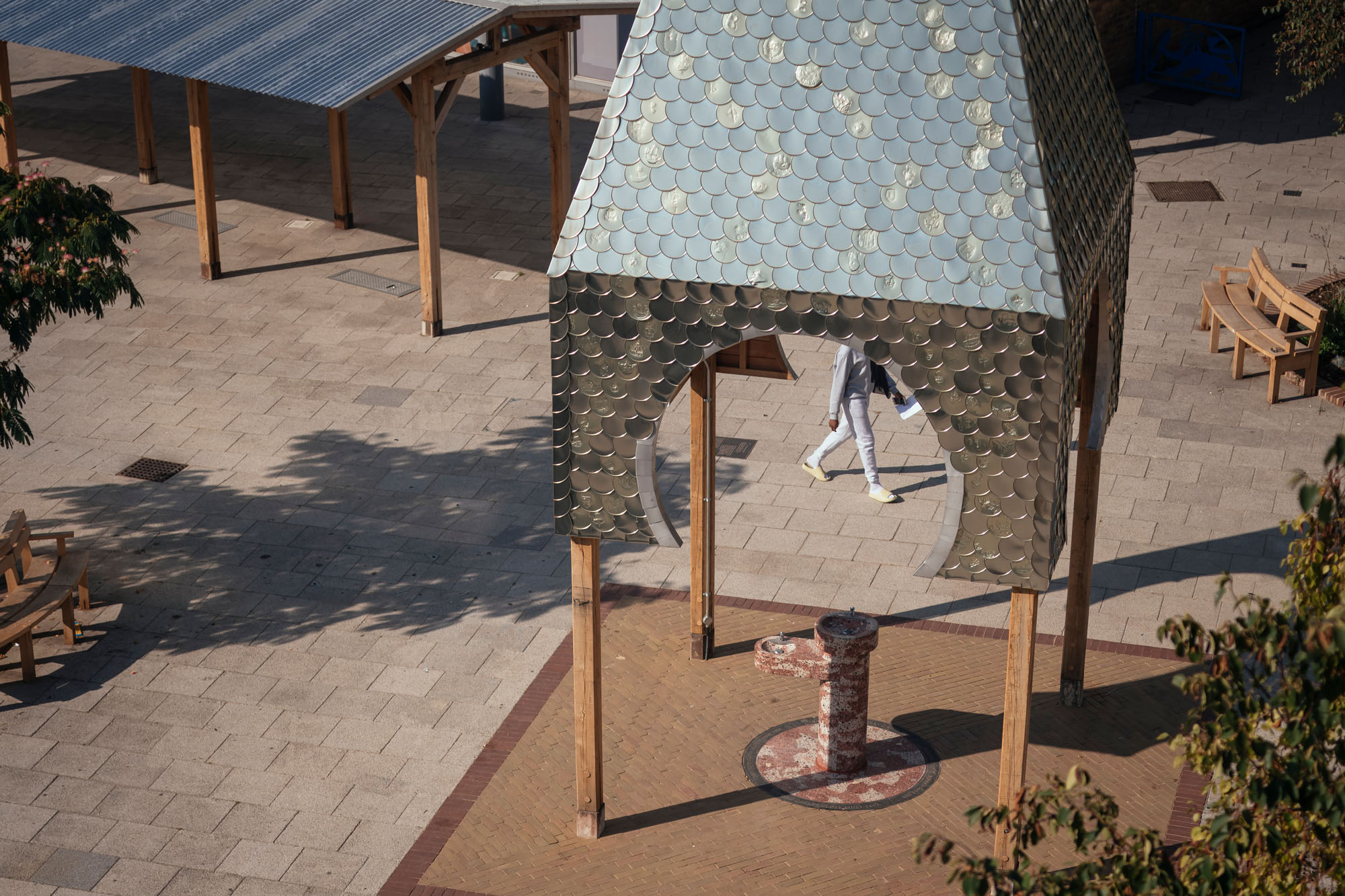
February 16, 2022
In Bermondsey, London, Local Designers Collaborate to Revive a Neighborhood Market
“I’ve been selling fish for about 40 years. And I’ve seen it go from a packed market to it being more or less only me having a stall here.”
Russel Dryden, fishmonger and Community leader

“I’ve always run a stall here,” said Russell Dryden, speaking to Metropolis. “I’ve been selling fish for about 40 years. And I’ve seen it go from a packed market to it being more or less only me having a stall here.”
Witnessing the market’s decline, Russell took action. After contacting fellow local businesses, he made the market and its vicinity a Business Improvement District. “It gave us the opportunity to sit at the top table,” he said. His work paid off: eventually, the BID was granted $2.7 million from the Greater London Authority’s Good Growth fund to futureproof the area.
Using that money, London-based practices Hayatsu Architects and Turner Prize-winners, Assemble Studio, have provided the market with the infrastructure to hopefully thrive once again. On the face of it, the changes made aren’t show-stoppers. The most notable addition to passers-by is a shiny new clocktower—a twee timber structure clad in tin can scales embossed by residents and supported by stilts with a clock abutting atop. The tin cladding stands out in the local visual context but has particular historical resonance—Bermondsey is the birthplace of the tin can, with the first being produced during the 19th century.


“We wanted to involve the local community and make something that could manifest at an architectural scale,” said Takeshi Hayatsu, founder of his eponymous studio, speaking of the community workshop that saw Bermondsey locals emboss the tin—all of which was part of the extensive community engagement and consultation that took place for the project.
A more subtle change is the new timber bollards that have replaced concrete ones and been pushed closer to the street, allowing more space for traders. The concrete from the others hasn’t been wasted, instead, it has been stained red and reused for seating. The refurbished market can now accommodate 36 stalls. It’s a far cry from the 200 that were once here, but it’s a better foundation for growth as the market looks to become a genuine community hub again.
The tower is the central focal point of Bermondsey’s market, flanked on either side by Oak-framed canopies that provide shelter to potential traders. Better electrical services for stalls have been provided, too. Prior to this, the market’s infrastructure was severely lacking. “Nothing was working on the market,” said Dryden. “None of the electric was working, things broke and weren’t fixed, you know? We just couldn’t run a proper market.”

Hayatsu calls the new market area a “village green”—a place designed to be more than just a space to trade, where people can hold community events, perform, or relax. Though the market doesn’t sprawl out onto the street like it once did, visitors are encouraged to arrive by foot: much of the budget has been used on improving the pedestrian experience, largely down to street markings and motifs courtesy of graphic designers Stinsensqueeze, who are based in Bermondsey. Funding was also used to give shopfronts a facelift, too, while new paths into the village green area are being carved—with a new route linking to a soon-to-be-built housing development just north of the site.
The result is a pleasing rejuvenation of an area that now has the infrastructure to see its market come back to life. “The market has changed,” admitted Dryden. “Market trading, owning shops—it used to all be passed on, father to son. But now most kids go to university or get educated and don’t want to work their mum and dad’s business like they used to, that era’s gone. Now it’s about getting new traders in, a different generation—and that’s what this is for.”
Would you like to comment on this article? Send your thoughts to: [email protected]
Recent
Projects
The Project That Remade Atlanta Is Still a Work in Progress
Atlanta’s Beltline becomes a transformative force—but as debates over transit and displacement grow, its future remains uncertain.
Profiles
WAI Architecture Think Tank Approaches Practice as Pedagogy
Nathalie Frankowski and Cruz García use their practice to help dismantle oppressive systems, forge resistance spaces, and reimagine collective futures.
Products
Functional Beauty: Hardware That Does More Than Look Good
Discover new standout pieces that marry form and function, offering both visual appeal and everyday practicality.










